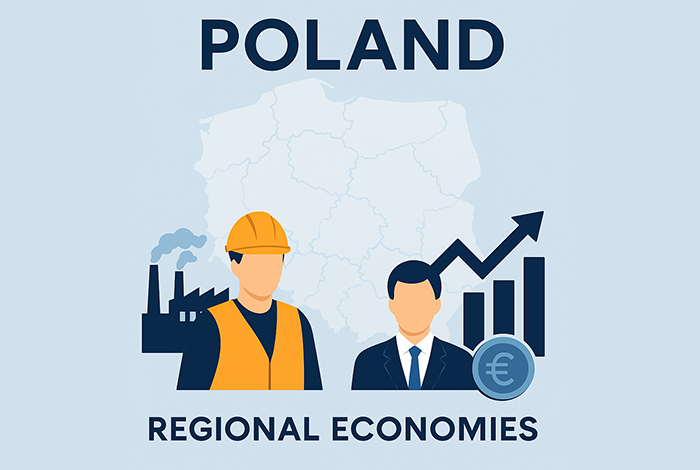2025-04-15
indicators

Statistics Poland has released its latest regional report on the socio-economic situation of voivodships for the fourth quarter of 2024. The data indicate both positive and negative developments across key sectors including GDP, labour markets, wages, agriculture, and industry. Gross domestic product (GDP) in the final quarter of 2024 grew by 3.2% year-on-year in real terms, driven primarily by domestic demand. The contribution from household and public consumption, along with inventory accumulation, supported this growth. However, net exports continued to negatively affect overall economic performance. Gross value added (GVA) across the economy increased by 2.1%. The most notable annual growth occurred in the financial and insurance sectors (+6.4%), transportation and storage (+5.8%), and professional and technical activities (+5.3%). Construction was the only major sector to experience a decline, falling by 7.7%. In the labour market, the average number of employees in the business sector decreased by 0.4% compared to 2023, with job losses reported in 11 out of 16 voivodships. Registered unemployment remained steady at 5.1%, though regional variation persisted, ranging from 3.0% in Wielkopolskie to 8.7% in Podkarpackie. The number of registered unemployed individuals under 30 and over 50 also declined slightly. The average gross monthly wage in the enterprise sector rose by 11.0% in 2024. Świętokrzyskie recorded the highest wage growth (+16.0%), while Śląskie reported the lowest (+9.4%). Despite the wage increases, disparities across regions persisted, although the gap between the highest and lowest earners narrowed. Agricultural output rose by 2.2% compared to the previous year, largely due to a 5.2% increase in animal production. Crop production declined by 1.1%. Prices for cereals, beef, and milk increased year-on-year, while pork prices fell. Livestock numbers decreased in most voivodships, except for a few such as Łódzkie and Mazowieckie. In industry, sold production rose slightly by 0.3%, reversing the 1.5% decline seen in 2023. Mazowieckie led growth with a 6.6% increase. Meanwhile, construction and assembly production dropped by 7.7%, a sharp contrast to the previous year’s 4.9% growth. Inflation eased in 2024, with consumer prices rising on average by 3.6%, down significantly from 2023. Prices for food and non-alcoholic beverages grew at a much slower pace (3.3% compared to 15.1% in 2023), and transport costs fell across all regions. Financial results of non-financial enterprises deteriorated, with net profits falling by 24.3% year-on-year. The decline was driven by slower revenue growth compared to rising costs. Profitability ratios worsened across most voivodships, although some improvement was observed in Lubelskie, Małopolskie, and Podkarpackie. Investment outlays by non-financial companies declined by 7.8% at constant prices, following a strong 10.2% growth in 2023. Fewer investments were made in buildings and structures, although more new projects were launched compared to the previous year. Overall, the report reflects a stabilising economy with signs of recovery in some areas, particularly consumption and wages, tempered by weaknesses in construction and business profitability. Labour market dynamics remained uneven, and regional disparities in employment and economic output continue to persist.

